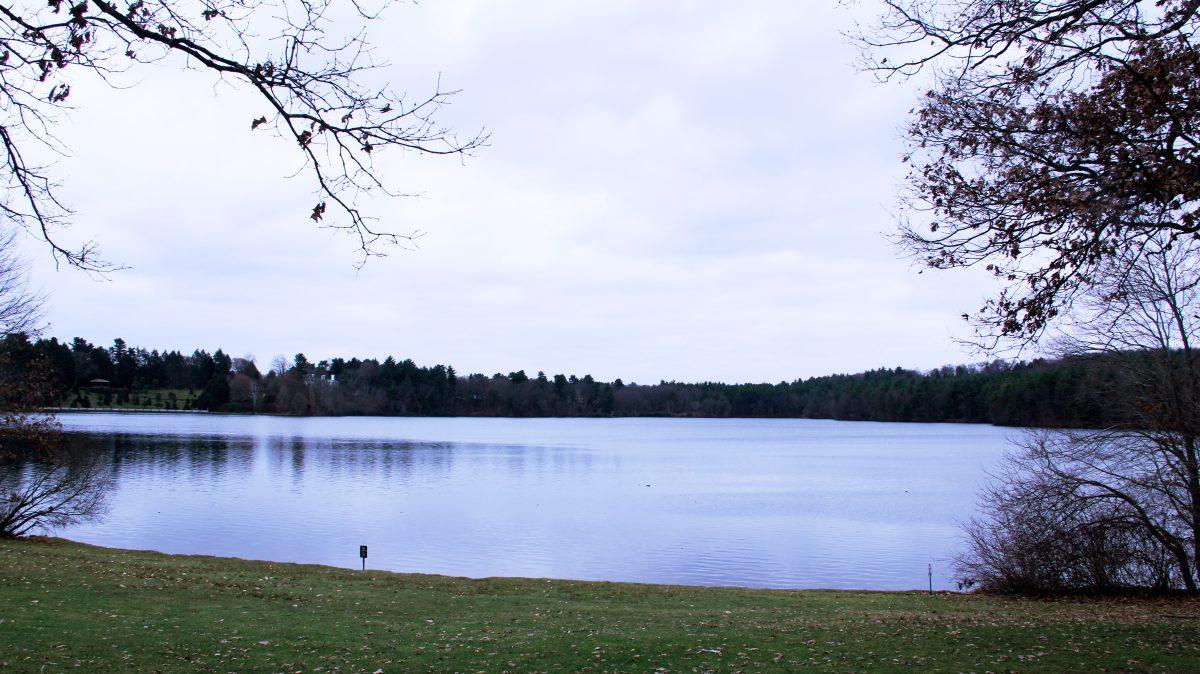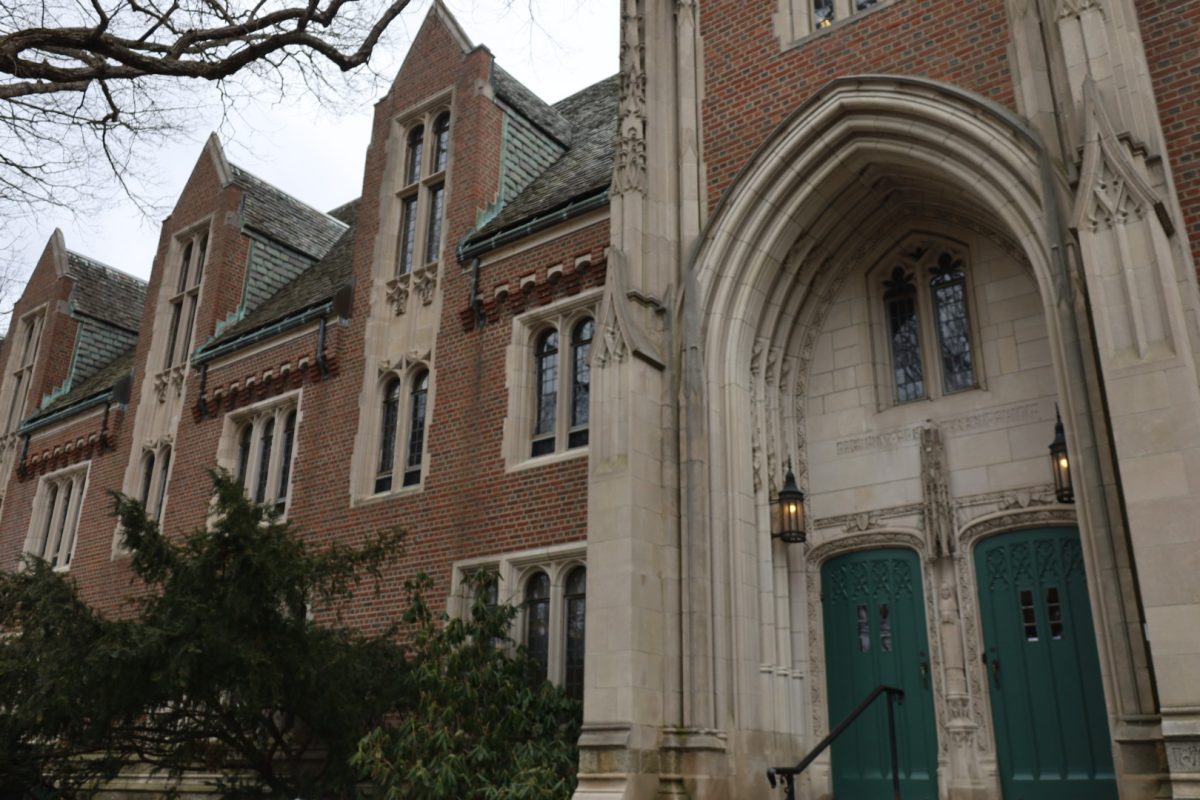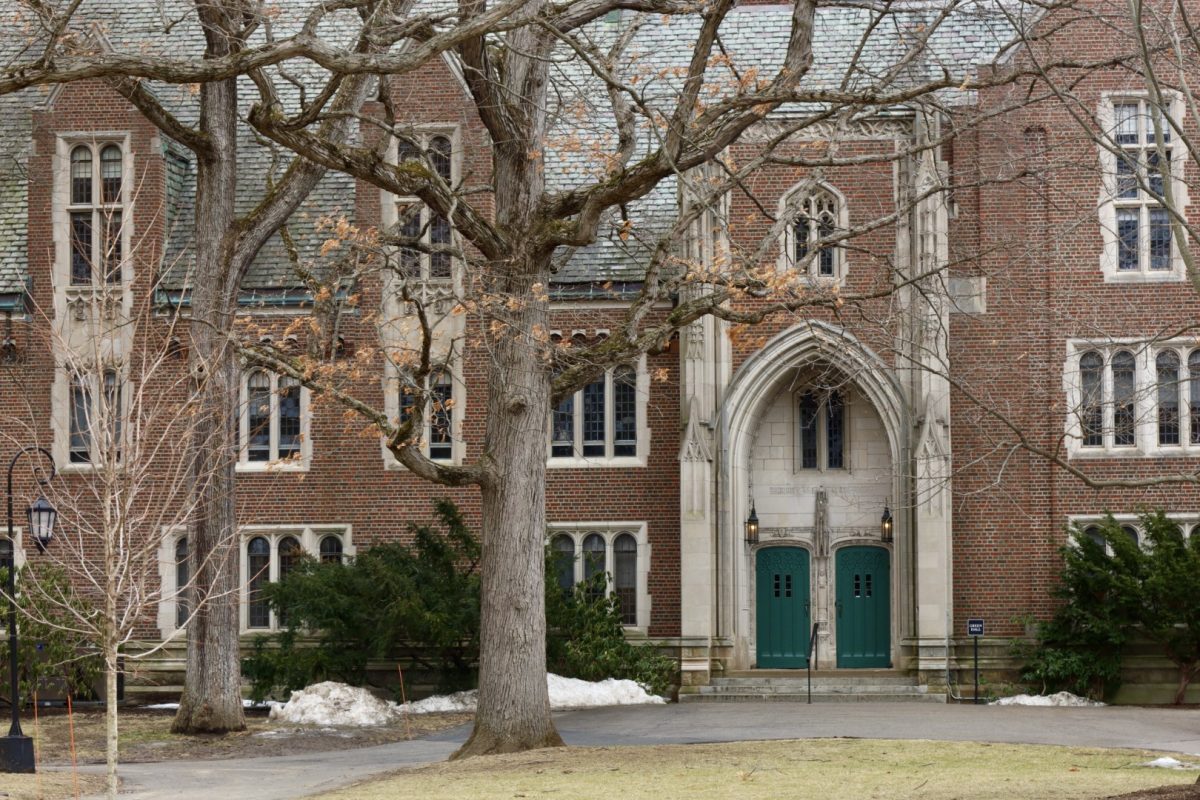Past the banks of Lake Waban used to lie a not-so-well known body of water dubbed Paintshop Pond. The pond was located among disintegrating stone and wood shrapnel and was a remnant of Henry Wood’s Sons Paint Factory. In the late 1990s the pond was classified as one of the most contaminated places in the state of Massachusetts with a Tier 1A hazardous waste classification by the Massachusetts Department of Environmental Protection (DEP). It was left to the current owners of the property, Wellesley College, to pursue the cleanup. After investing a total of $35 million over a span of 20 years, the contaminated area was finally contained through a project more complicated than the College could have ever anticipated.
The College is currently working with the state to monitor water downstream from the Paintshop Pond site to ensure minimal contamination.
Regarding the current state of Pete Zuraw, Lake Waban, assistant vice president of facilities management and planning, believes that although there are traces of contamination everywhere, it is usually not enough to cause concern.
“The question is rarely ‘Will there be an identifiable contaminant in the environment here in eastern Massachusetts,or elsewhere in our country?’ but ‘Are the contaminants found at levels greater than typical background levels and do they pose a known risk?’” Zuraw said.
Henry Wood’s Sons Paint Factory, a family business, was located on six acres on the western edge of the Wellesley College campus. Henry Wood’s Sons Paint Factory was once the largest paint pigment manufacturer in New England and produced six tons of dry pigments daily. The company operated near Lake Waban for over 60 years before it went bankrupt in 1921. The College purchased the land in 1932 and demolished the buildings the following year.
The College officially began cleanup of the site in 1991; however, news of the contamination reached College officials long before then. In fact, almost 90 years prior, in 1903, Pauline Durant, a state board of health member and one of the founding members of the College, wrote a letter to the College informing them of high lead levels in Lake Waban due to paint factory activity. In 1970, the DEP informed the College of the risky red, blue and green soil that was present in mounds surrounding Paintshop Pond. According to reports by the Wellesley Tab, the student-run newspaper at the time, and the Wellesley Office for Public Affairs, however, it was the College who “pushed for waste removal,” “bent over backwards” and commissioned soil tests in 1975.
Furthermore, in the early 1980s, Wellesley College faced tensions with non-profit environmental organization Greenpeace, who found soil around Lake Waban to be contaminated after analyzing samples themselves. They found high levels of both lead and chromium. Wellesley officials did not take substantial action and claimed that the 1975 tests only found a “marginal problem.” The College also neglected to state that the tests indicated the presence of yellow and orange pigments containing lead chromate and the more toxic basic lead chromate. Most alarming, however, was evidence of red pigments, which took on the name of “lead red” and are created by oxidizing metallic lead. Wellesley did cover the area around Paintshop Pond, which had visible contamination in tarps and erected a snow fence to warn people to keep away. This, however, was met with mockery. The Wellesley Tab reported in 1988 that the lab director for the National Toxics Campaign called the “protective measures at Paintshop Pond ‘laughable’”.
Zuraw stated that the College began investigating and planning a solution as soon as the contamination was found by state, federal and College authorities.
“The College continues to place a high priority on making sure that all owned property does not present a threat from environmental hazards,” Zuraw said.
In 1982, the College also began working with GHR Engineering, which conducted preliminary tests and submitted subsequent reports to the DEP. The report included evidence that the sediment and water analyses showed levels of lead and chromium that were below the threshold for drinking water and that the use of Lake Waban for recreation need not be restricted. That year, a meeting took place between the College, GHR and the DEP whereby it was determined that the site posed no immediate health threat.
After almost a decade of monitoring the site, the College decided to begin cleaning up the site in 1991. It is unclear what initiated the preliminary phase of cleanup, but it was possibly a response to the DEP’s “Notice of Responsibility” issued in 1986. The notice informed the College that if necessary, they were responsible for mitigating the situation as owners of the contaminated property. At that time there were critically high levels of metals reported in Lake Waban and measurements exceeding EPA drinking standards in Paintshop Pond. The Wellesley Chemistry department also found evidence of paint pigment in about 60 percent of the area around Paintshop Pond. According to an article by the Boston Globe in 1999, a Natick resident and environmental specialist attempted to understand the sudden action.
“The will wasn’t there. Now, I can say the will has been found,” he said. The College invested over $2 million from endowment funds to clean up Paintshop Pond and to inform the public of the issue.
The College then attempted to distance the Pond and contaminated areas from Lake Waban. They surrounded Paintshop Pond with a six-foot fence to keep out trespassers, including children who could be poisoned if they ingested the pond water. Warnings were posted throughout the property to inform the public about lead exposure risks and campus security frequently patrolled the site. Finally, 600 tons of fresh sand were added to swimming areas in Lake Waban to isolate any contaminated soil. The practice of adding fresh, uncontaminated sand is now performed annually. In terms of removal, three piles of soil mixed with colorful pigments near Paintshop Pond, totaling 3,600 tons, were sent to Stable-X disposal facility in Quebec. After the College took these measures, they believed the cleanup was complete. Assistant Vice President for Administration Barry Monahan, told the Wellesley Tab in 1991 that he thought that, “This [was] the beginning of the end.”
The cleanup, however, was far from over. In 1994, the College released an “imminent hazard evaluation,” indicating that there were high levels of pollution still present in Paintshop Pond. The decision to evaluate the land again is particularly surprising because, according to 1993 reports from Wellesley College’s environmental correspondents at the time, testing did not indicate chronic risk to either humans or the environment.
“Although two measurements taken in Lake Waban exhibited concentrations in excess of the chronic water quality criteria for hexavalent chromium, the weight of available evidence does not suggest that this observation translates to a chronic risk,” the correspondents stated to the DEP. The process took three years and cost the College $10 million. Cleanup proposals included capping the contaminants in place, various soil treatment options and the removal of contaminants to an off-site location.
Zuraw considered the reasons why it took the College so long to come to a concrete solution. These include the nature of the contaminants found at the site and the lack of a standard cleanup method. It took the College time to investigate the situation and come up with an effective plan.
“[A] long time elapsed since the contamination by a third party, [which] meant that it was inevitable that a great deal of time would elapse until all parties could be satisfied that an effective solution had been identified and appropriate oversight was in place to assure that it would be implemented as agreed upon,” Zuraw said.
Zuraw also emphasized the many agencies involved and the complicated location of the site, which includes its connection to other bodies of water and surrounding wetlands.
Wellesley Department of Health Director Lenny Izzo, who was present when the last cleanup was undertaken, agrees that the College handled the situation well considering the circumstances.
“I think the project went remarkably well considering the scope of the project. We don’t see projects like this, especially in Wellesley, so it was a fascinating process. The College was drawing guidance from the environmental consultants that they hired and then coming up with a remediation plan, which is then weighed in by the MassDEP,” Izzo said.
What would be known as the final cleanup began in March of 2001. At the time, the College estimated it would take 14 months to complete; however, it took 18. The total cost of cleanup was $30 million. What started as a $35,000 investment in the 1900s for the purchase of the property would turn into a multimillion dollar problem. In preparation, 30 acres of trees were cleared and the water was drained from Paintshop Pond and the surrounding wetlands. Twelve hundred fish were temporarily stunned and moved to Lake Waban. The College, which does not own Lake Waban, denied liability for the contamination, and the state contributed $1.4 million. Twenty thousand cubic yards of contaminated soil were chemically treated and an additional thirty six thousand were excavated. The soil was then buried in a protective cover or “engineered barrier” to prevent the spread of contaminants. Finally in 2002, new athletic fields were built on top of the barrier. Prior to this, Wellesley had the fewest athletic fields of all Division III schools. The wetlands of Paintshop Pond were also restored and expanded. Throughout the entire project the College kept the public informed via published fact sheets, which the Department of Health helped create, and information sessions.
Lake Waban still contains traces of lead and chromium, but the source of the toxicity has now been cleared so no imminent threat is present. No large cleanup operations are in the near future.
“The paint factory cleanup site was one of the largest in the state of Massachusetts when being undertaken. It is unlikely that a remediation need of that size will be identified on our campus for a very long time, if ever,” Zuraw said.
Photo by Bianca Pichamuthu ’16, Photography Editor






